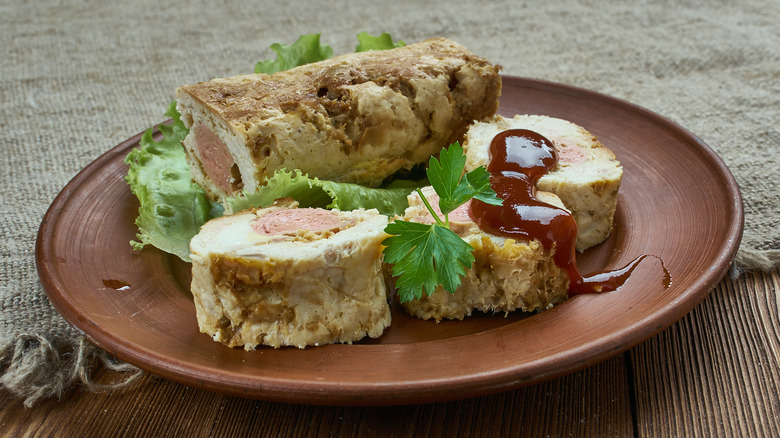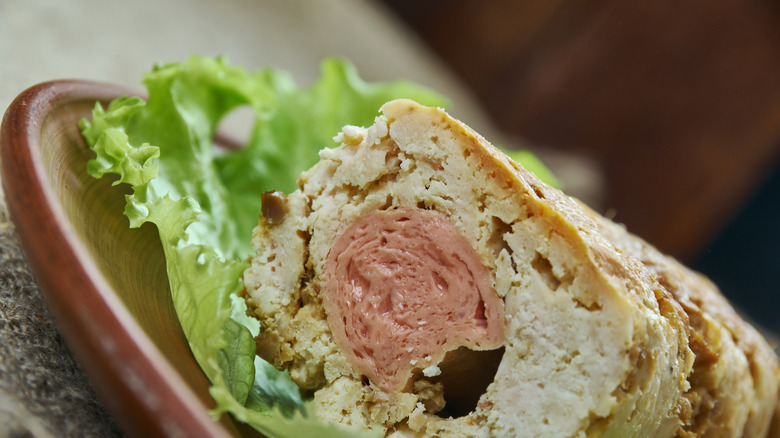Embutido: The Stuffed Filipino Meatloaf You Should Know About
Embutido may be the Spanish word for sausage, but in Filipino cuisine, it refers to something else entirely: meatloaf. This version of meatloaf, however, isn't the kind you're probably used to seeing, made with ground beef and covered in tomato sauce. Though it is filled out with breadcrumbs, onions, and seasoning much like American meatloaf, that's where the similarities end, Foxy Folksy explains.
Embutido is made with ground pork instead of ground beef and has hard-boiled eggs and Vienna sausage in the middle. It's also stuffed with vegetables such as carrots and green bell peppers, as well as relish and raisins to give it a sweeter flavor profile. Per Yummy, some recipes call for adding evaporated or powdered milk to make it creamier, while others sprinkle cheese on top or substitute the ground pork for chicken, ham, and fish. Finally, the meat mixture is wrapped in foil, rolled into a log, and steamed rather than baked in a loaf pan.
Filipino meatloaf was inspired by both American and Spanish cuisine
Though the embutidos made nowadays can't quite be classified as either American meatloaf or Spanish sausage, both were sources of inspiration for the Filipino dish. According to The New York Times Magazine, embutido was first created when the Philippines was still a Spanish colony. The original embutido was a Spanish-style sausage made with Filipino ingredients, hence its name and log shape, and it later evolved into a dish more similar to American meatloaf in 1898, when Americans occupied the country and remained until 1946.
The American influence on Filipino cuisine and embutido, Serious Eats explains, was largely marked by the introduction of canned foods. This happened during the Spanish-American war, and processed meats like Vienna sausage and corned beef became a popular inclusion in many recipes. Canned meat became a status symbol, The New York Times Magazine shares, so embutidos made with corned beef and Vienna sausage were more common. Today only the Vienna sausage remains, but both the American and Spanish influence is clear.

